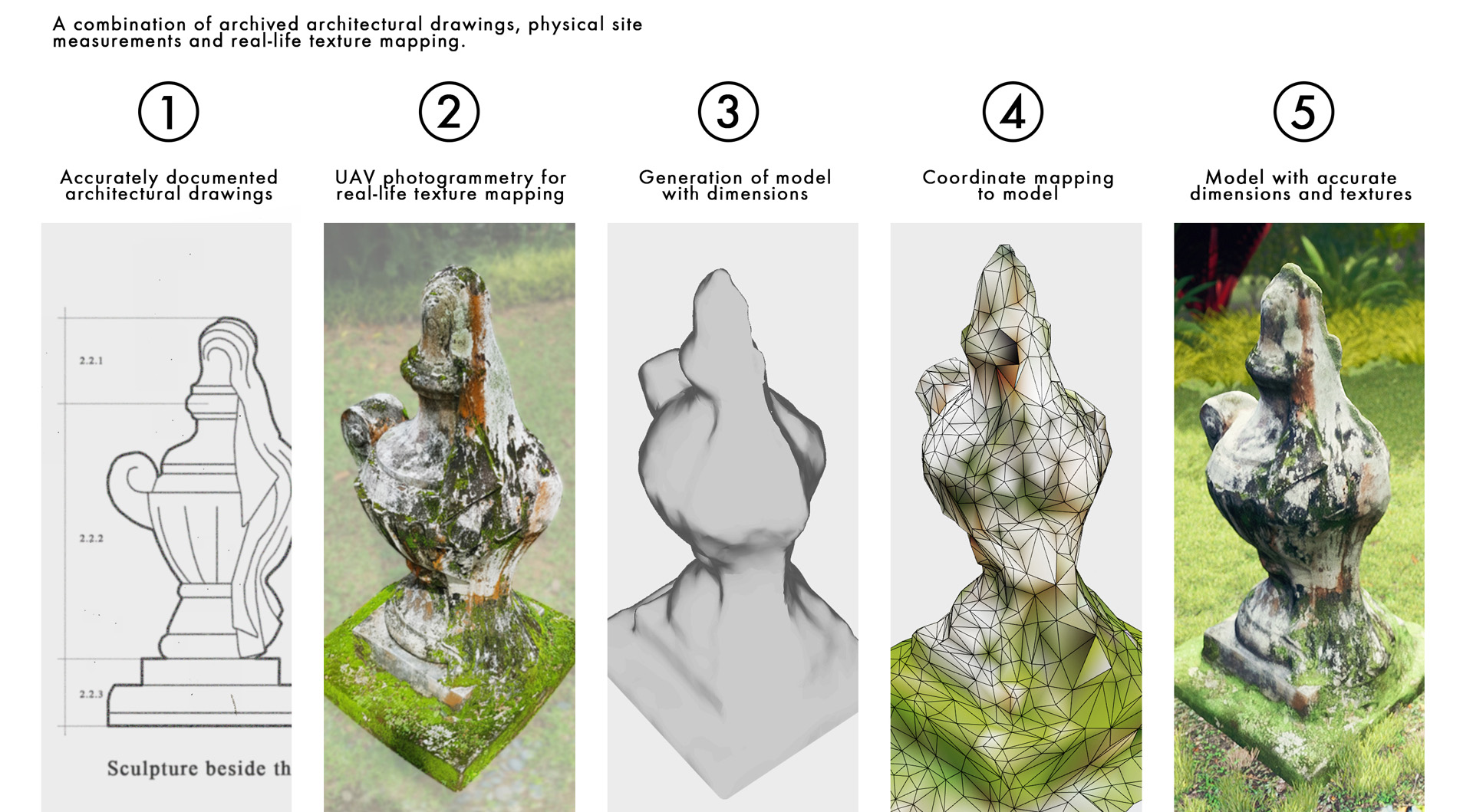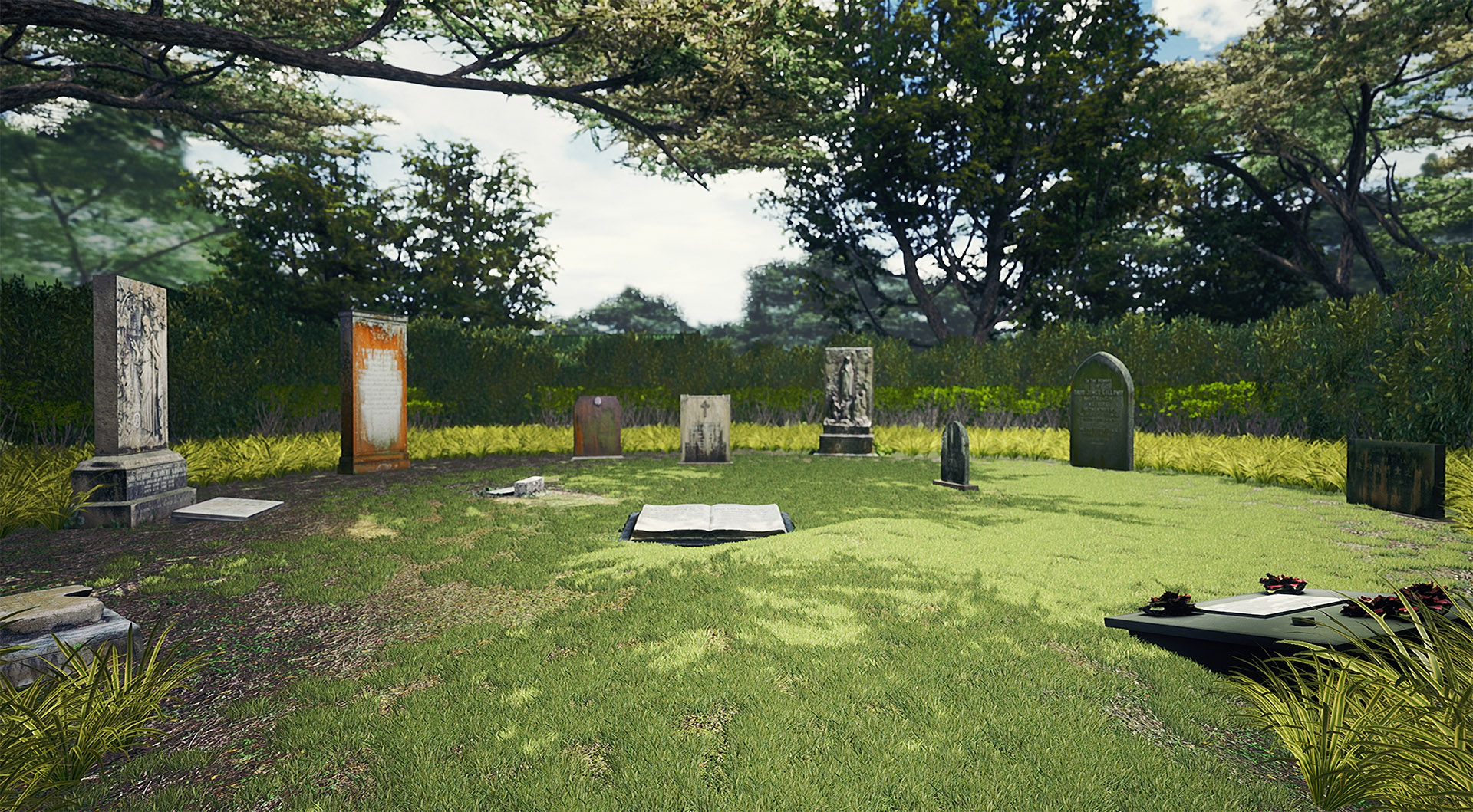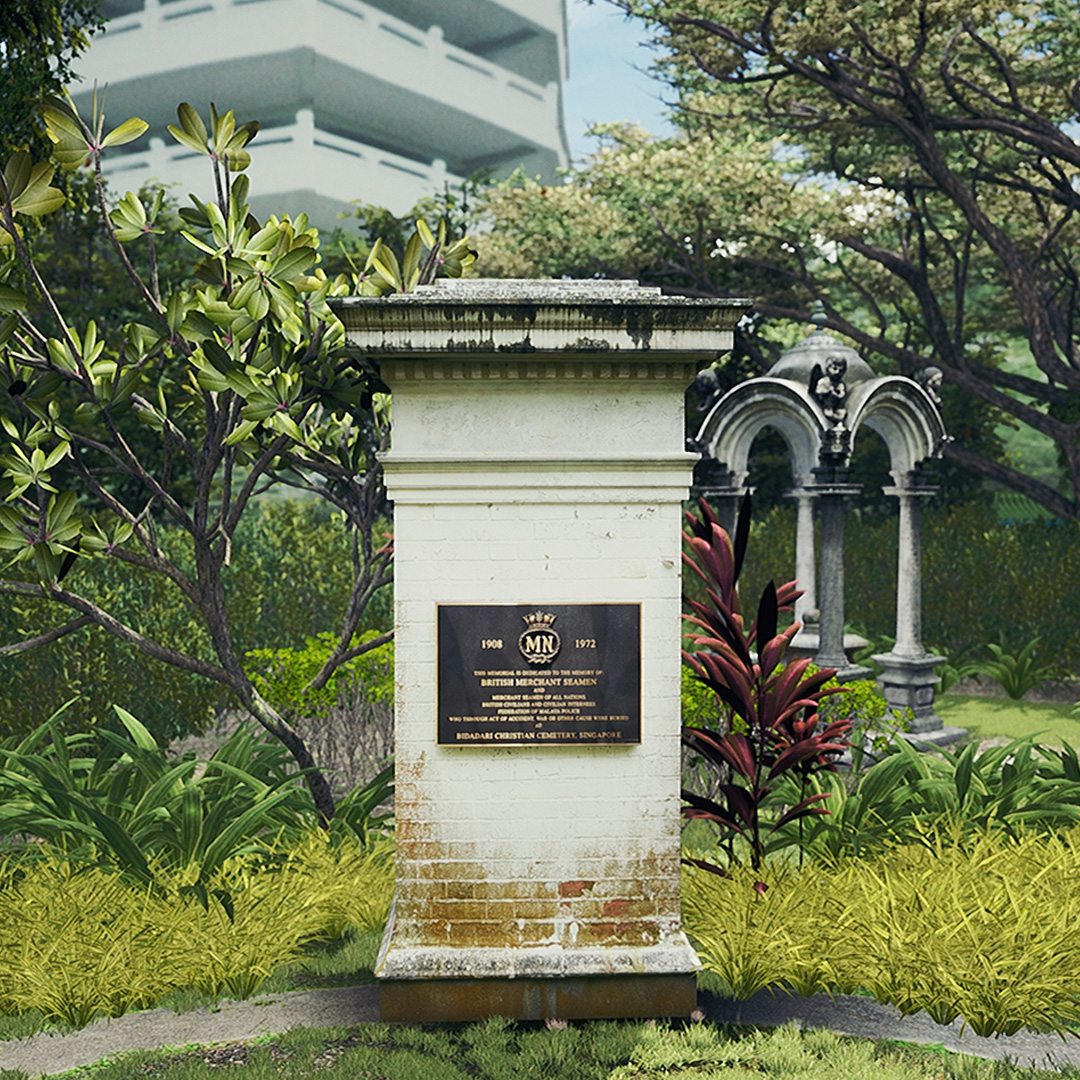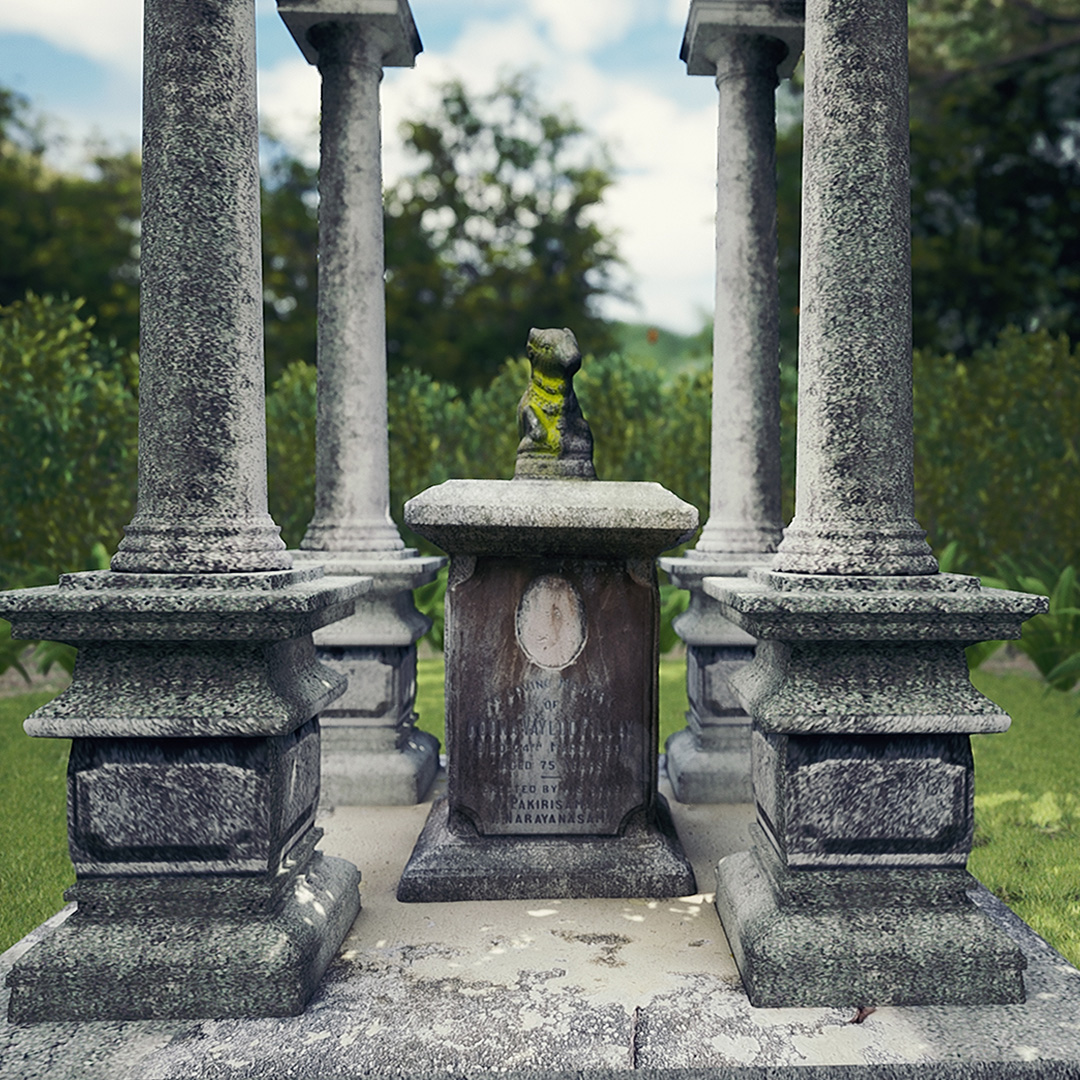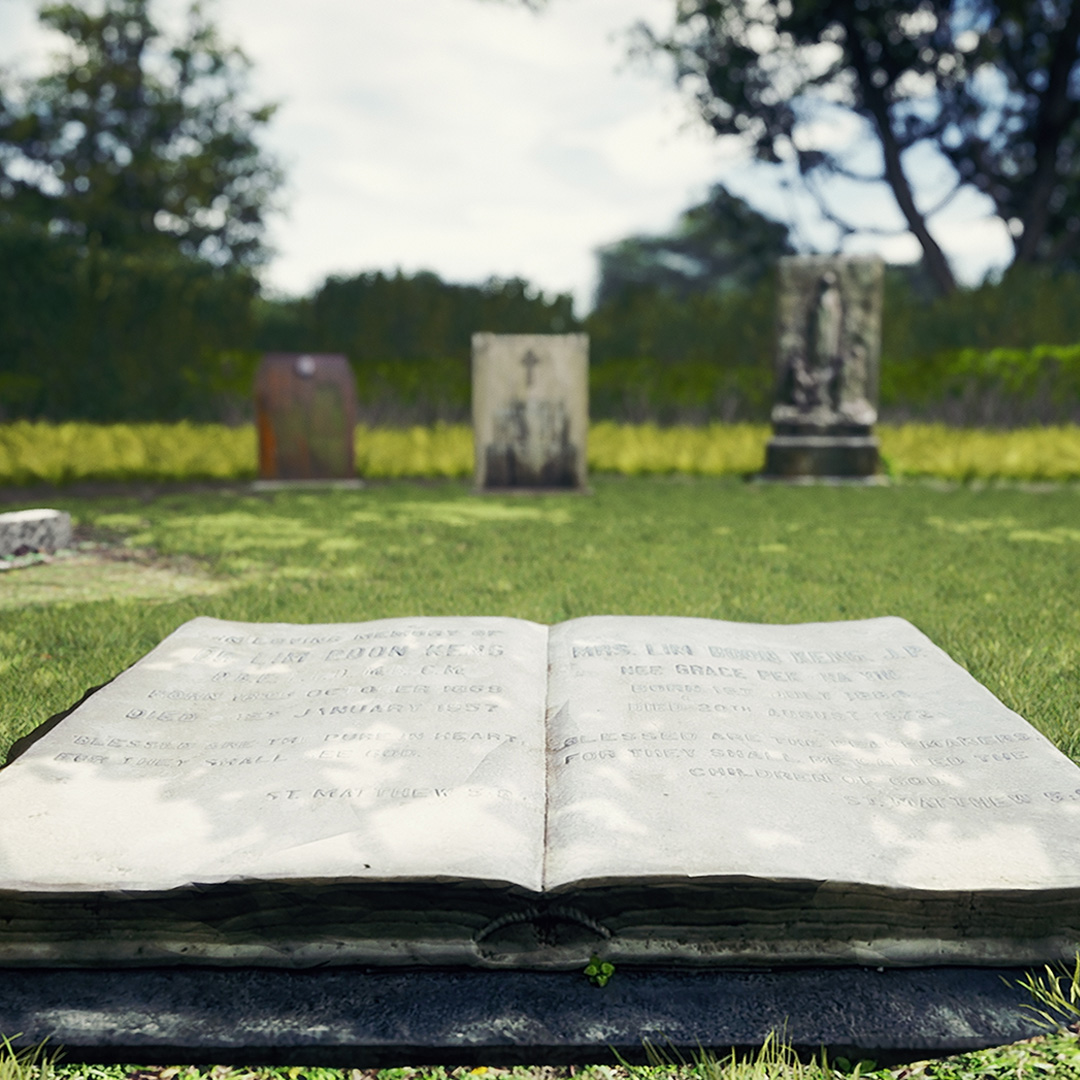BIDADARI GARDEN Virtual Museum
Ang Chin Moh Foundation . 2019
Singapore
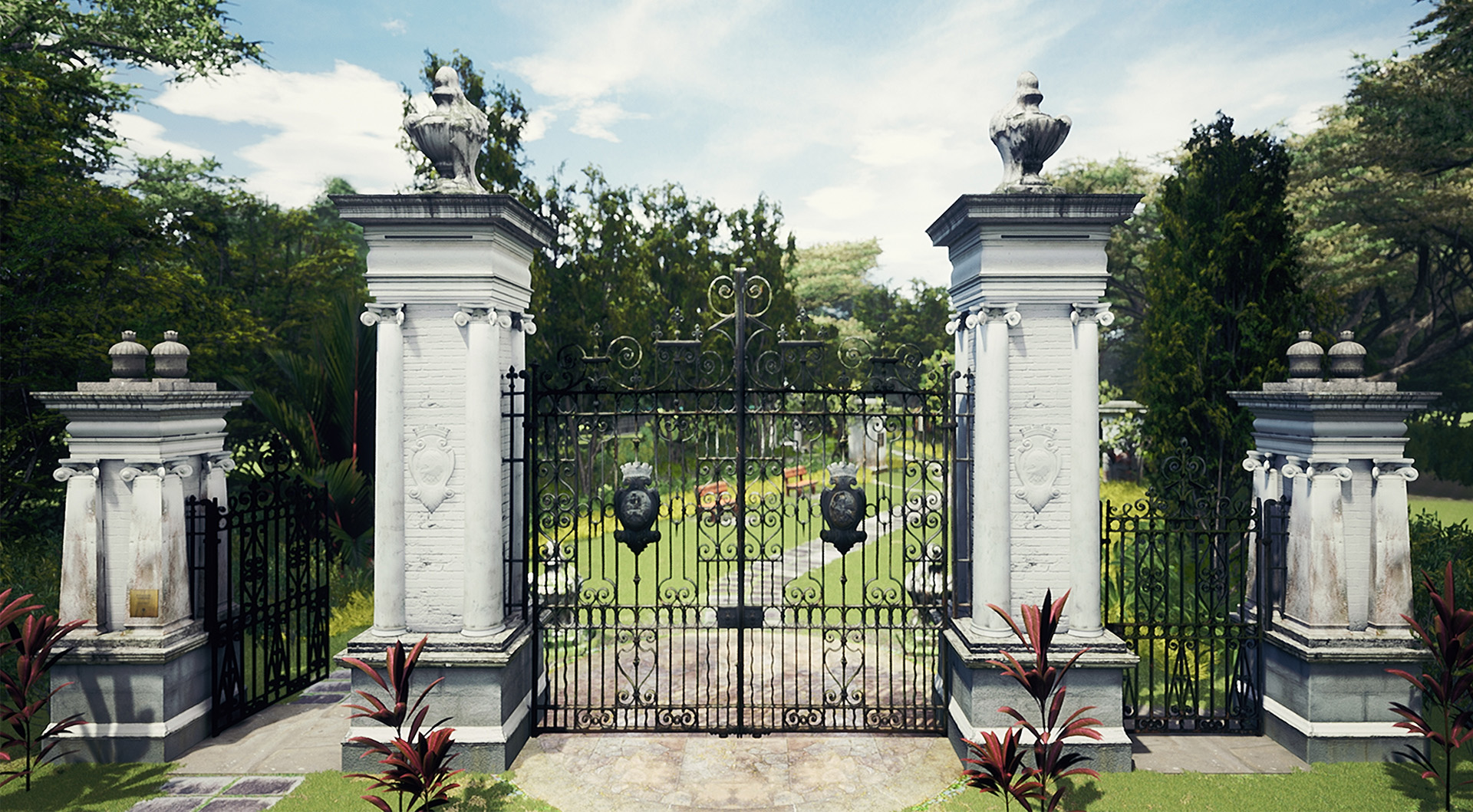
Virtual documentation of Bidadari Garden, Singapore.

VIRTUAL
TOUR

VIRTUAL
REALITY

PC
APP

PHOTOGRAMMETRY
As part of an ongoing digital conservation effort, Vouse has partnered with the Ang Chin Moh Foundation for the digital preservation of Mount Vernon Complex, which was slated for redevelopment in 2019. Mount Vernon Complex sits atop what was once Singapore’s largest grave site. Spanning over 0.13 square kilometers, it contained various columbariums and funeral parlours. This project is the virtual documentation of the Bidadari Garden that was a landmark in Mount Vernon. Using a combination of digital modelling from construction drawings and UAV photogrammetry, the virtual environment is recreated with accurate dimensions and real-life textures.
The whole of Bidadari Garden, including the various monuments within it,is digitally preserved and arranged in a fully interactive and explorable PC app as well as VR app. Contact us for more information if you wish to experience the app.
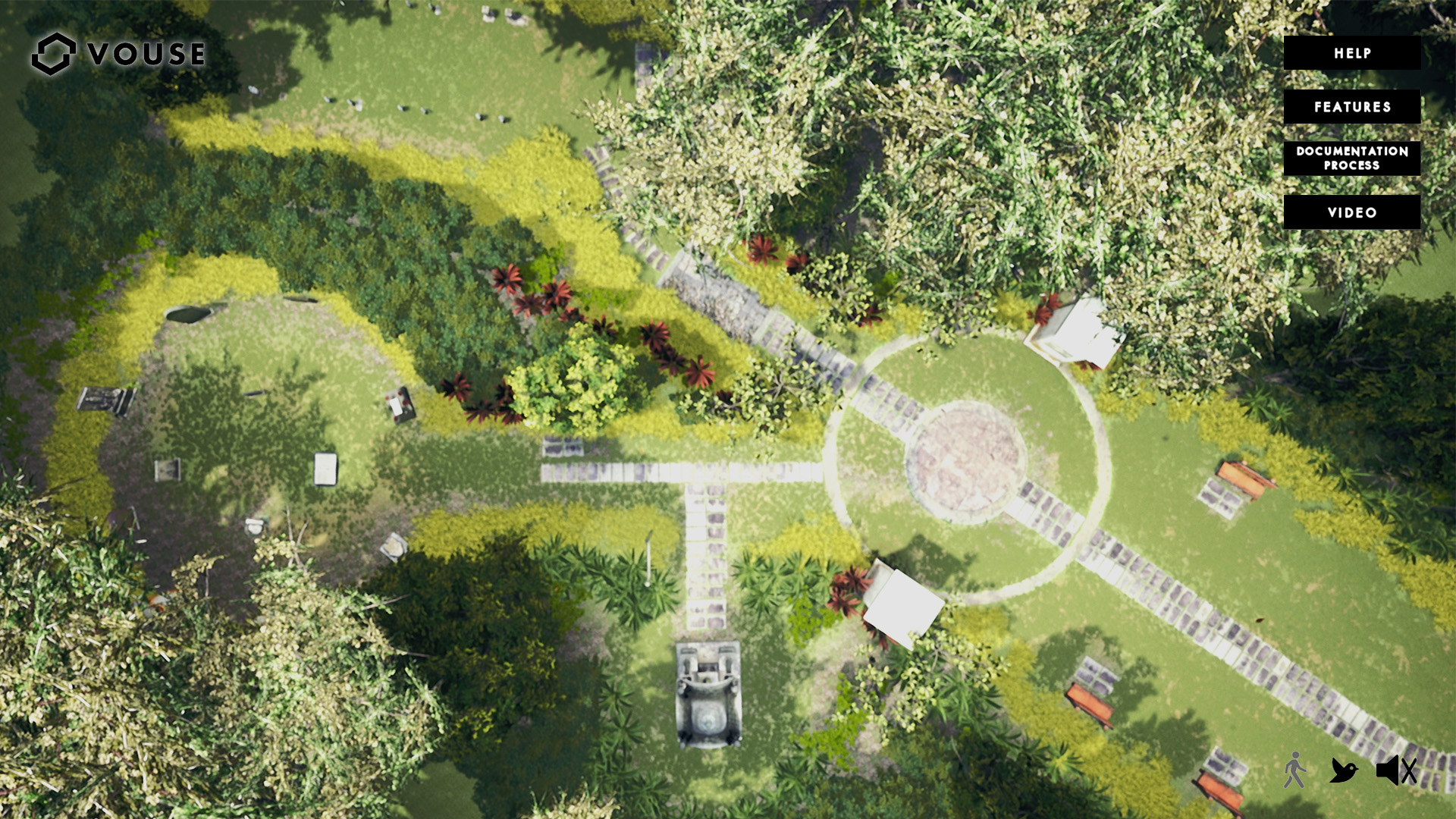
Explore the Bidadari Garden virtually from a bird's eye view.
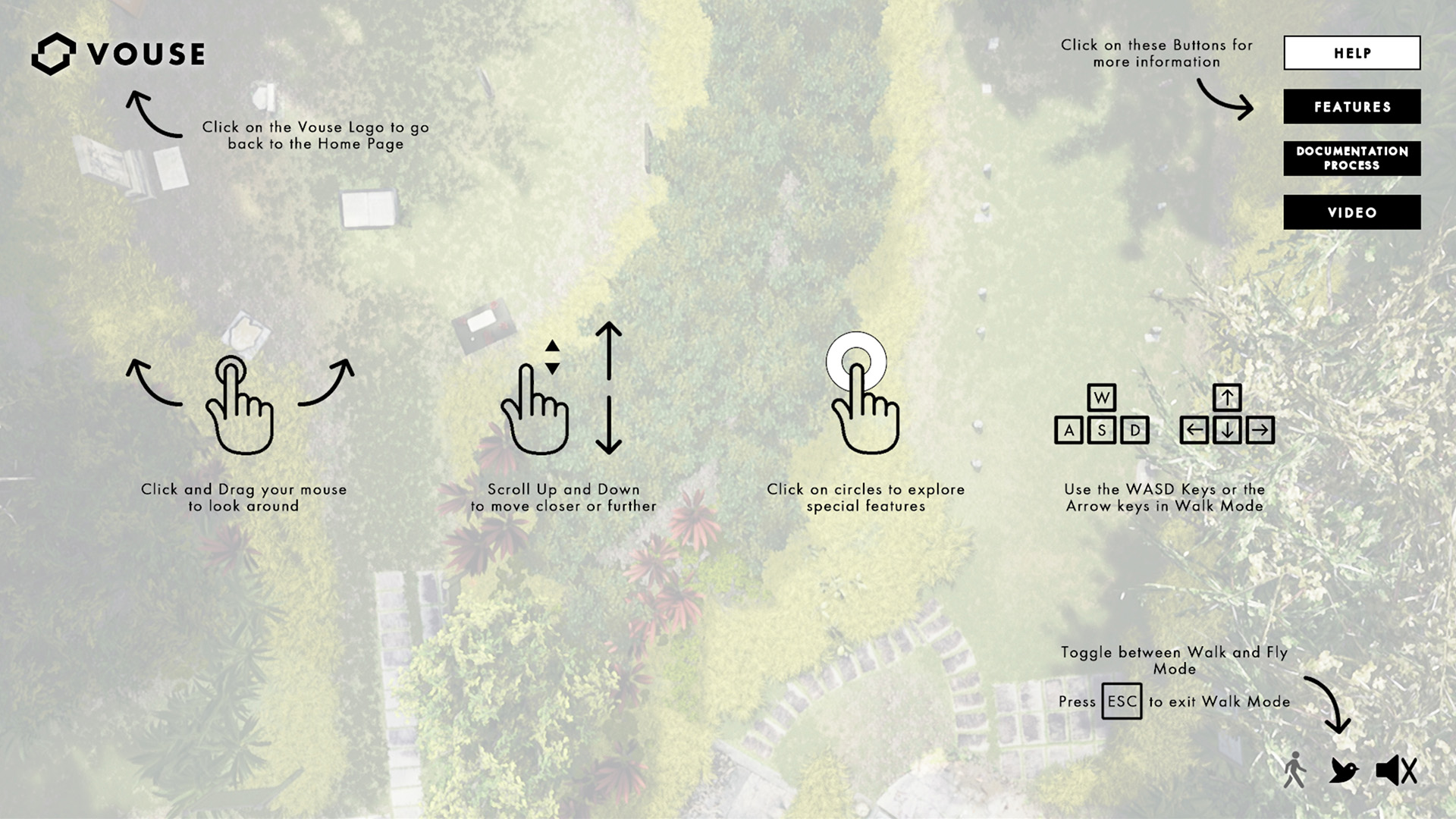
Instructions on how to navigate in-game.
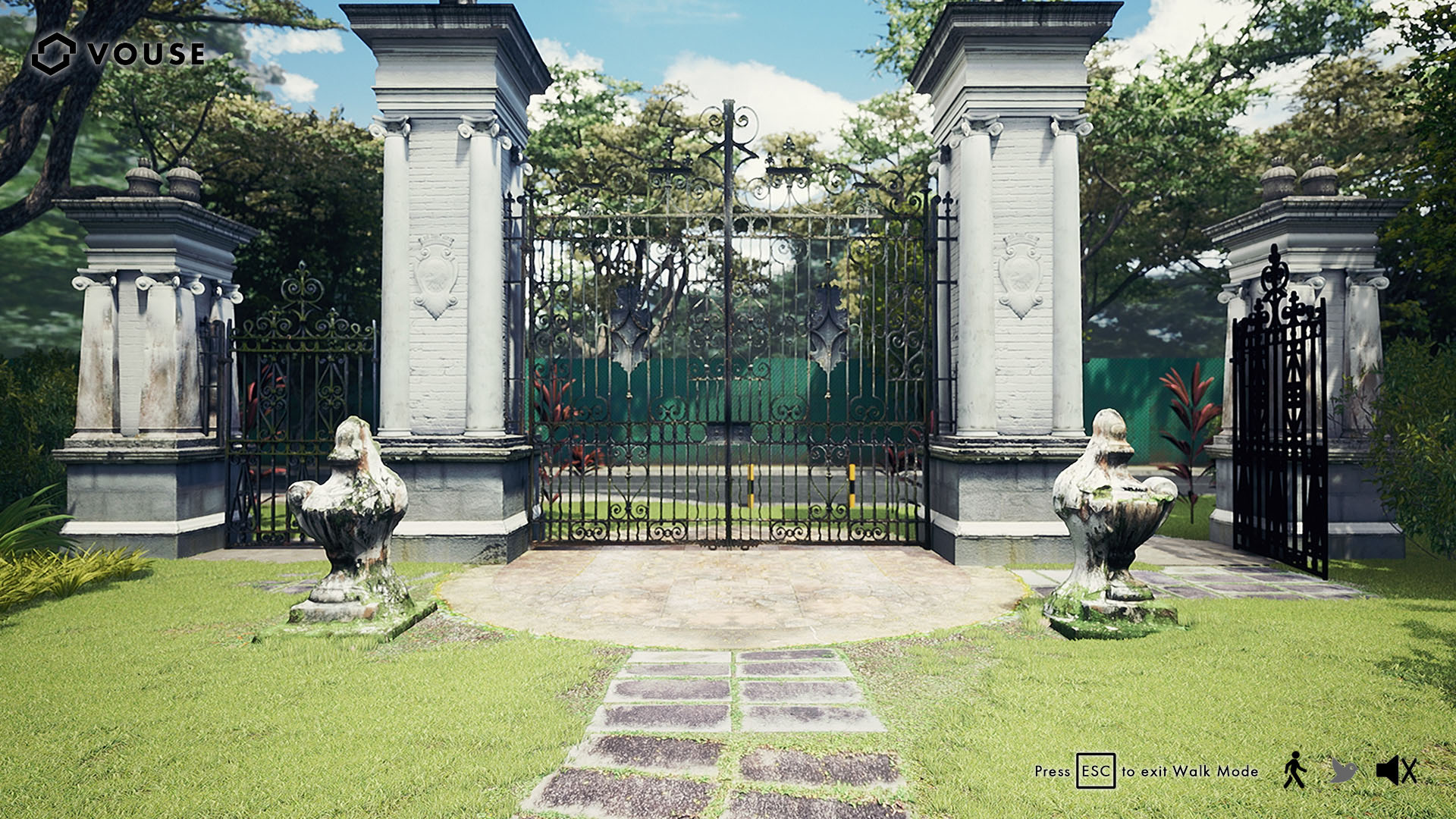
Walk around and interact with monuments at the site.
Conservation Status
Located along Mount Vernon Road, the Bidadari Garden was developed by the National Heritage Board in 2004 to commemorate the history of the Bidadari Cemetery, one of the oldest cemeteries in Singapore. The cemetery was located along Upper Serangoon Road, near the Woodleigh MRT station.
During the early 19th century, the area around Bidadari was first acquired by Europeans who hoped to transform the area into plantations. The area known as Bidadari obtained its name from a grand residence of the same name. The word “Bidadari” is Malay for “fairy” or “angel” or “nymph”.
In 1903, the Municipal Commissioners acquired 26 hectares of land at Upper Serangoon Road to develop a cemetery catering specifically for Protestant Christians and Roman Catholics. Two years later, another plot of land nearby was purchased from Dato Mentri of Johore to establish an adjoining cemetery for the Muslims.
The Bidadari Christian and Muslim cemeteries were opened in 1908 and 1910 respectively. The cemetery expanded further to include a burial area for the Hindu community in 1925.
The Cemetery accepted its last burial in 1973. In 1996, the land was earmarked for urban developments and this garden space which is within the larger Bidadari estate, serves to remind visitors of a piece of Singapore history.
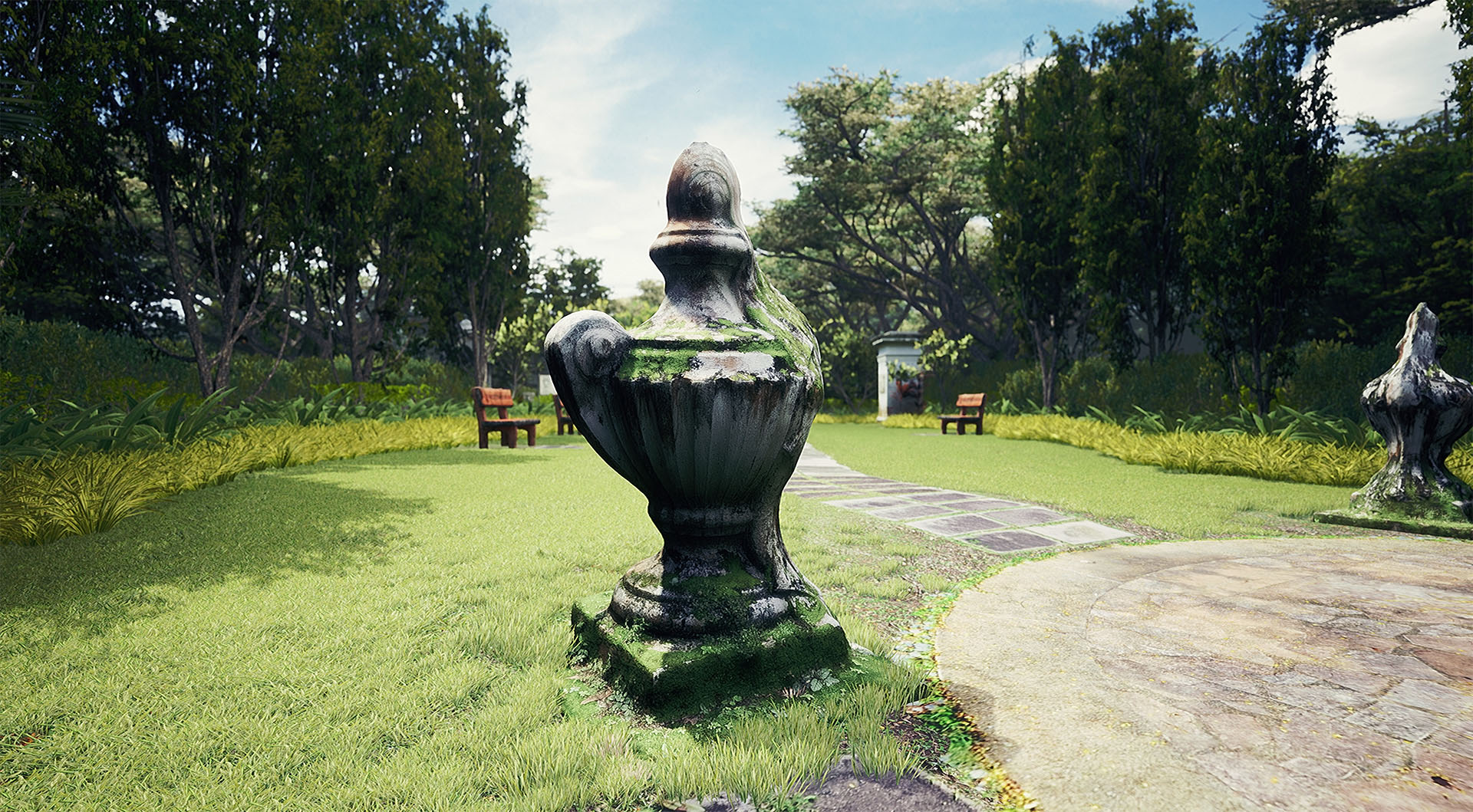
Inspect statues and monuments up close in the app.
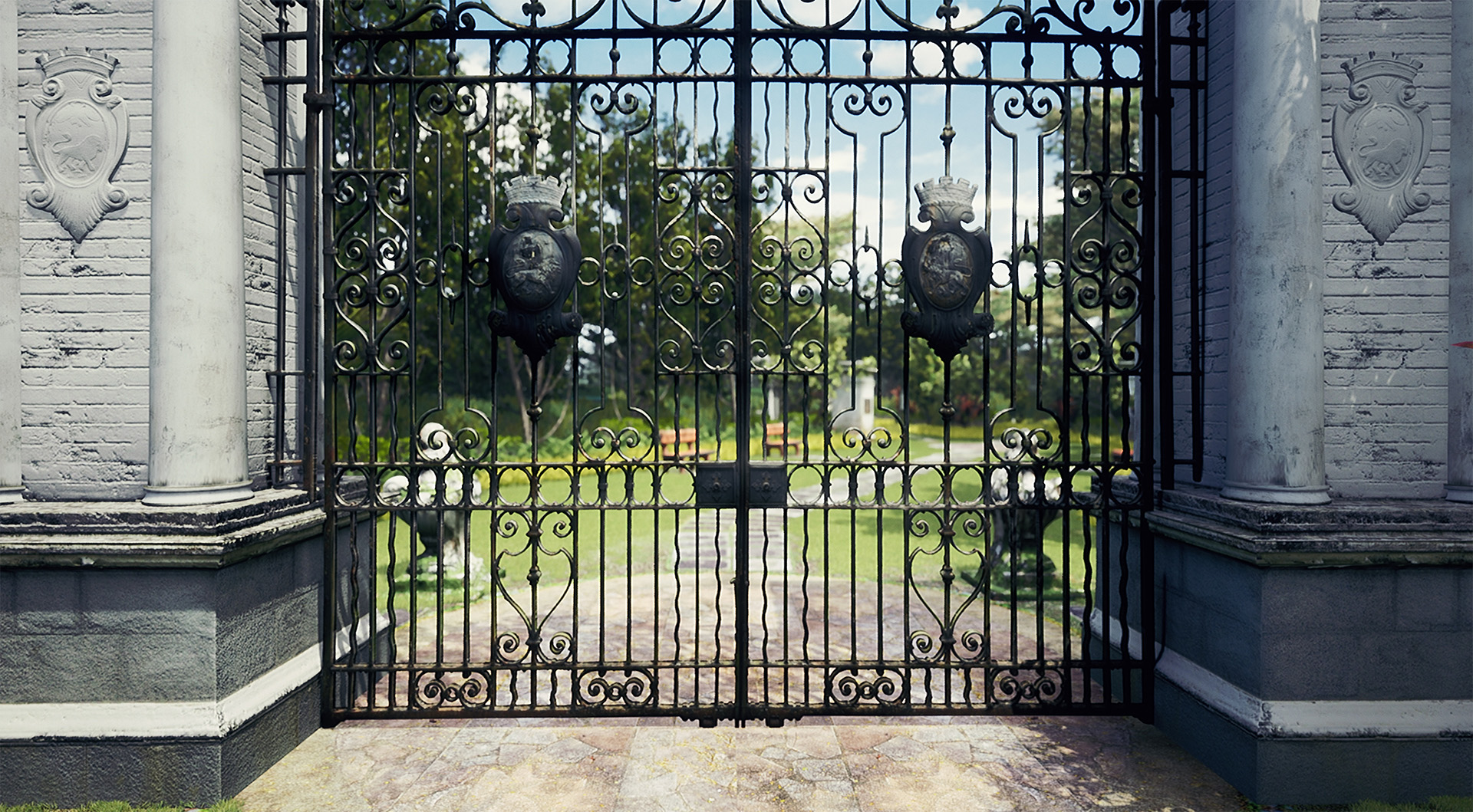
Details of the historic gate at Bidadari Garden.
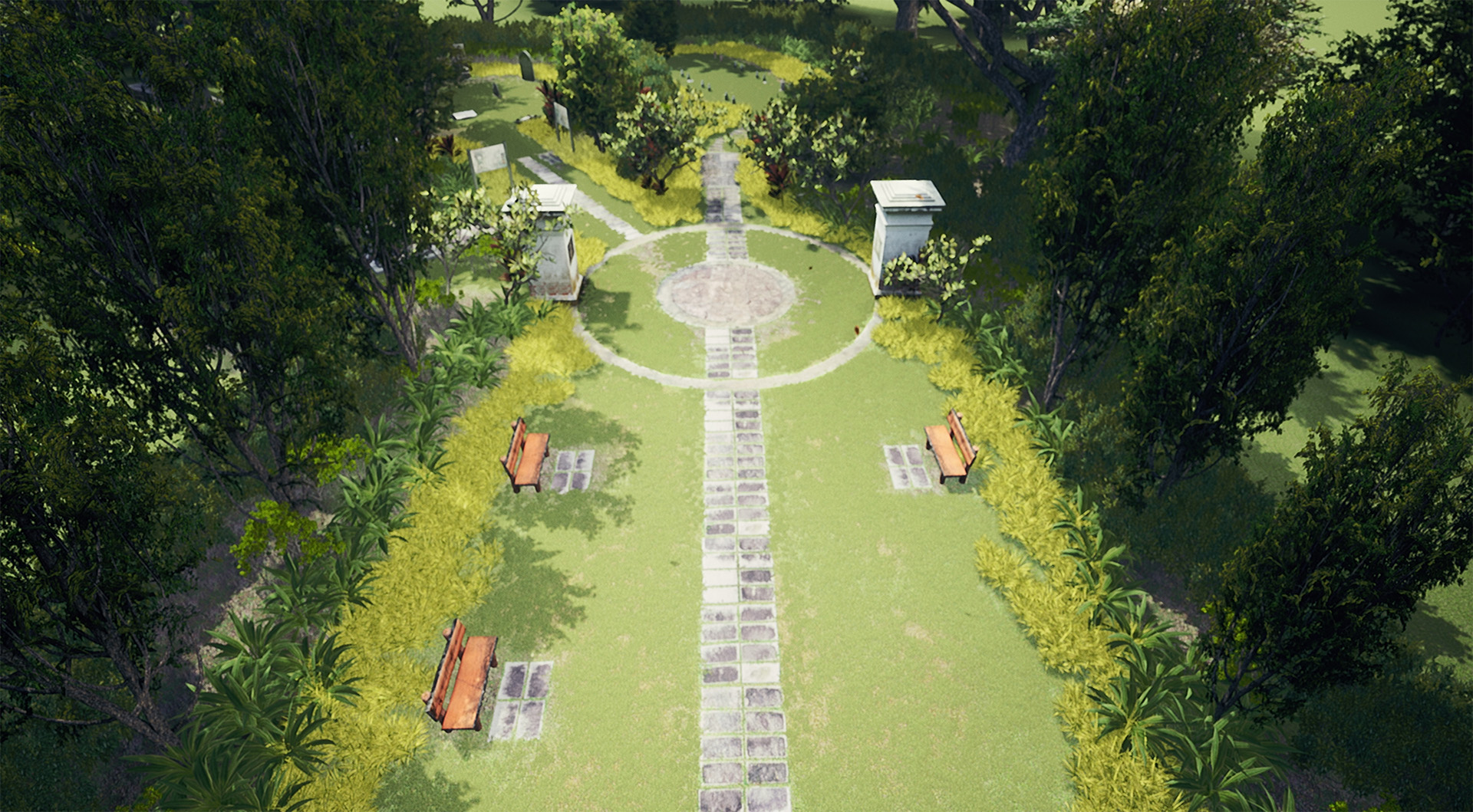
Bidadari Garden viewed from a vantage point.
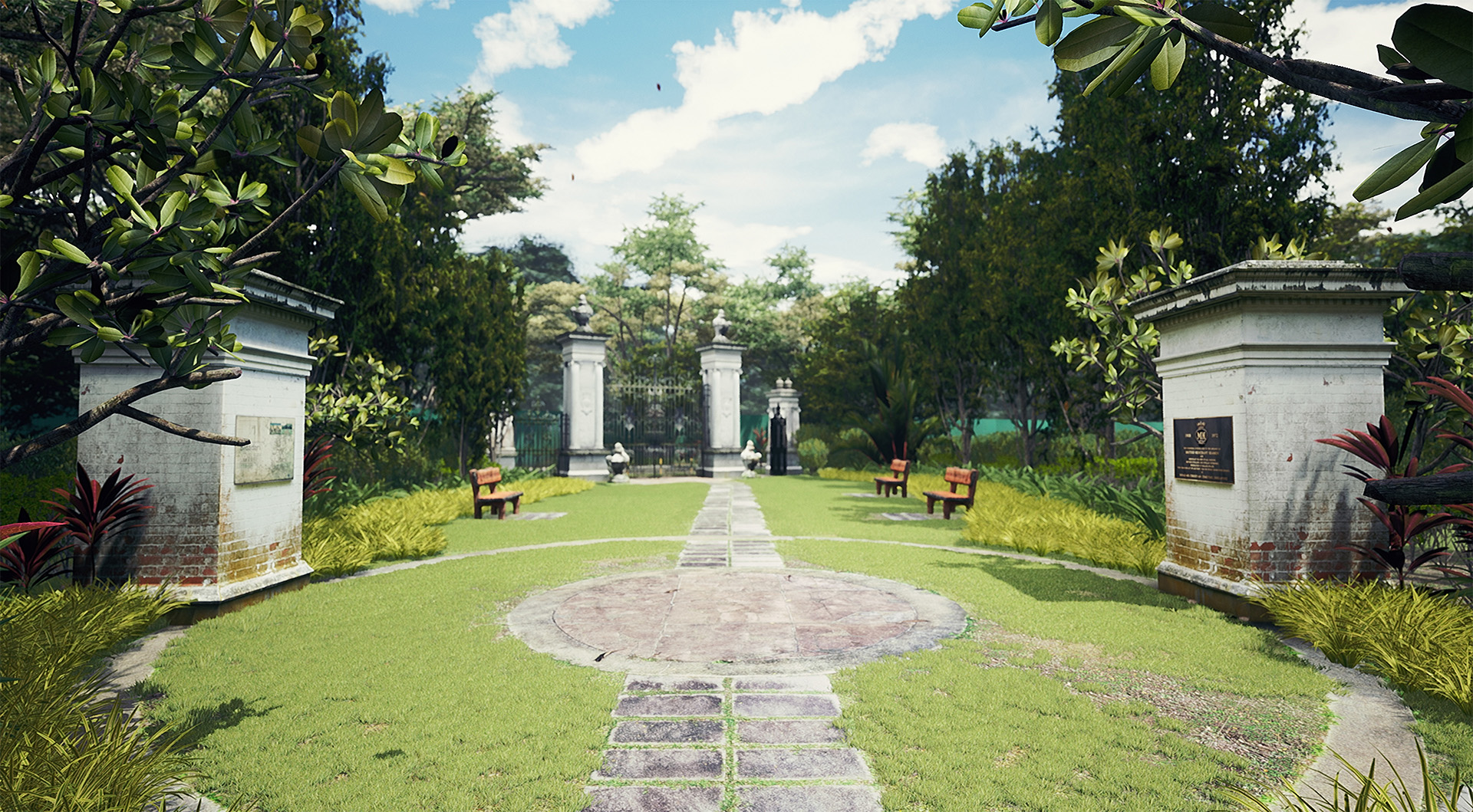
Textures and flora are mapped from photo-textures taken on site.
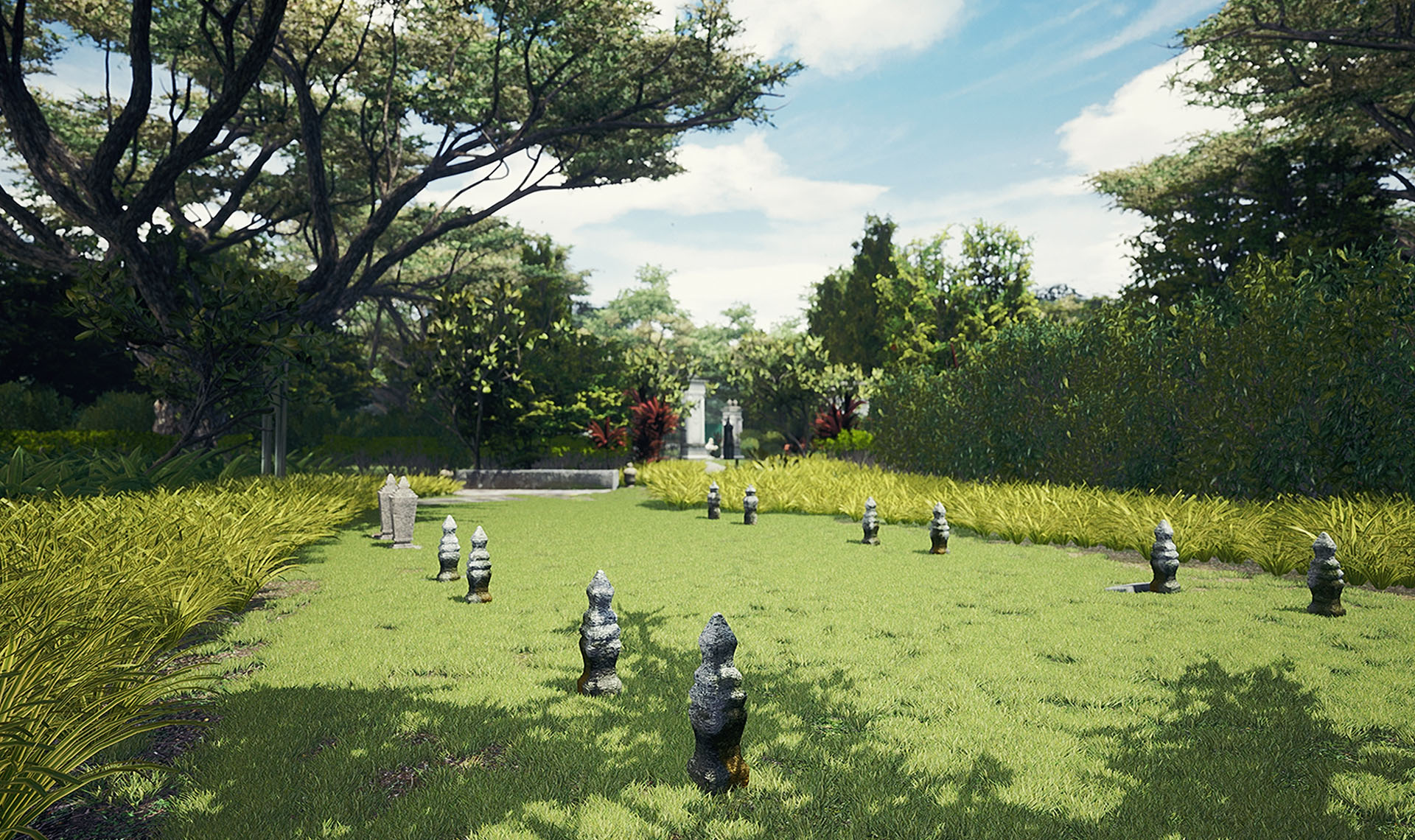
Muslim cemetery in Bidadari garden.

